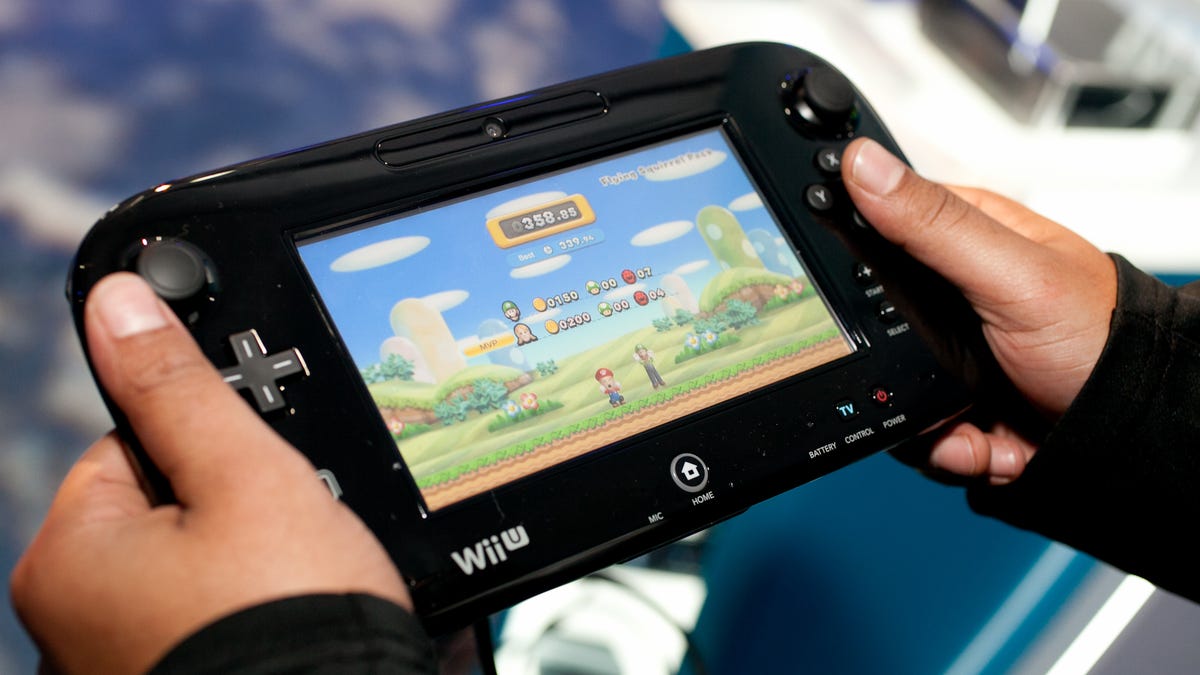The Wii U's quest to save living-room couch multiplayer
The new Nintendo Wii U may herald a return to synchronous-local gaming.

Forget all the talk about the unique tablet-turned-game-pad controller in Nintendo's new Wii U game console. Forget, as well, the highly hyped possibilities of dual-view second-screen gaming. The real triumph of the Wii U is in its advocacy for a nearly lost concept: same-room multiplayer gaming.
Yes, a reasonable amount of same-room gaming still goes on in living rooms and dorms, usually in the form of Street-Fighter-style beat-'em-ups, or sports games such as the Madden NFL series. But the classic concept of sharing a physical space alongside a virtual one has been eclipsed for years by other forms of multiplayer gaming that are not reliant on the participants being in the same place or even playing at the same time.
Let's call the experience of playing NintendoLand or New Super Mario Bros. U "synchronous-local" gaming. It's how we would play classic games from Combat on the Atari 2600 to Super Mario Bros. on the original Nintendo Entertainment System. It's also how we've played games from chess to Monopoly long before video games existed (apologies in advance to the legions of correspondence chess players who will no doubt object to this description).
More common today is what we'll call "synchronous-remote" gaming, which involves playing a game with other people at the same time, but not in the same location. That's the typical online shooter, from Halo to Call of Duty, whether played on a game console or a PC. E-sports-style game tournaments are an interesting combination of the two forms of synchronous gaming, but still a small niche.
Perhaps most removed from the classic same-room video game experience is asynchronous gaming. These are games played with other people, but neither at the same time nor in the same place. It's the biggest form of gaming around right now, because it includes just about every Facebook and social media game, from FarmVille to Words with Friends. It may not be what serious gamers think of as "real" gaming, but it's perfectly suited to the limited time and attention casual gamers (and frankly, most adults with jobs) can invest.
Multiplayer gaming typesSynchronous-local
Same time, same place (Guitar Hero, Wii Sports, fighting games, Super Mario Bros.)Synchronous-remote
Same time, different place (Online multiplayer shooters, such as Halo and Call of Duty)Asynchronous
Different time, different place (FarmVille, Words with Friends)
The original Nintendo Wii console was the last big blow struck for synchronous-local gaming (although a case can be made for the Guitar Hero/Rock Band series of music games as well), largely because of its masterful Wii Sports game, which introduced countless nongamers to motion-control tennis, bowling, and golf. It remains one of the most important milestones in the history of interactive entertainment, and was perfectly constructed for being shared in real time in someone's living room.
It's taken six years for the idea to come to the fore again. While the new Wii U console is launchingwith a much greater emphasis on supporting an online multiplayer community than the original Wii, it's still largely built around the idea of synchronous-local gaming, in a way that the other major living-room consoles simply are not (and note that the Wii U still has many other areas in need of improvement, as detailed here).
In my initial couple of weeks with the Wii U, it's become clear that many of the initial run of games, aside from the rote ports of older Xbox/PS3 games, simply play much better in a group setting.
Case in point: NintendoLand is designed to introduce the Wii U tablet controller through the use of recognizable Nintendo characters and short-form mini-games. Having tried most of the single-player games in NintendoLand, I found them frankly boring -- a dressed-up tutorial session for the tablet controller that you won't go back to after a first try.
But, as soon as a second player picks up a Wiimote and joins in for Luigi's Ghost Mansion or Animal Crossing: Sweet Day, it's like a light switch has been flipped on, and the experience completely changes. It's because these mini-games have really been designed with same-room play in mind, but also because same-room multiplayer gaming in general is simply more effective at communicating the shared experience, making use of peripheral vision, your spacial relation to the other players, and nonverbal cues that go missing when, for example, communicating through a scratchy Xbox Live headset.
New Super Mario Bros. U has a similar made-for-multiplayer vibe, although there's an odd disconnect between the tablet and the Wiimote wands. When playing with others, the tablet can only be used to perform support tasks, such as laying down temporary jumping platforms, for the other players. It's a tacked-on bit of busywork, and two to four players will have a better time with each using a Wiimote to control an onscreen character.
The Mature-rated horror game ZombiU and military shooter Call of Duty: Black Ops 2 both make a case for more-serious games benefiting from local, real-time multiplayer gaming. Those games can pit one player on the TV screen against another using the Wii U GamePad, each performing different tasks ideally suited for their individual screens.
But, is the Wii U an outlier, bringing the emphasis back to synchronous-local gaming for a limited subset of gamers, while millions of others run-and-gun online in Black Ops 2 or Halo 4? Or, will more of us come back to the idea that a big part of the experience of playing with others is doing it in person? Whether you think the Wii U is bringing back same-room shared gaming, or that we already live in an online-only world and there's no going back, post your thoughts in the comments section below.

